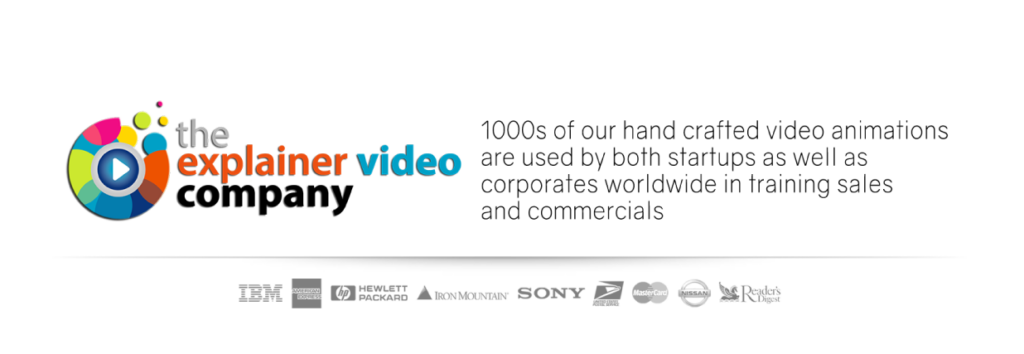What is Asynchronous Video?
 Asynchronous video refers to video content that is recorded and shared with the intention of being viewed at a time convenient to the viewer, rather than requiring the viewer to be present at the time of recording.
This contrasts with synchronous video, such as live broadcasts or real-time video calls such a zoom etc, where participants watch or interact simultaneously.
Asynchronous video has become increasingly popular in various fields such as education, corporate training, customer service, and more, thanks to its flexibility and efficiency.
Asynchronous video refers to video content that is recorded and shared with the intention of being viewed at a time convenient to the viewer, rather than requiring the viewer to be present at the time of recording.
This contrasts with synchronous video, such as live broadcasts or real-time video calls such a zoom etc, where participants watch or interact simultaneously.
Asynchronous video has become increasingly popular in various fields such as education, corporate training, customer service, and more, thanks to its flexibility and efficiency.
| Subject Title | Subject Description |
| Applications of Asynchronous Video | Explore how asynchronous video is used across different sectors like education, business, and more. |
| How is Asynchronous Video Different from Synchronous Video? | Understand the key differences between asynchronous and synchronous video formats. |
| Benefits of Asynchronous Video | Learn about the advantages of using asynchronous video. |
| Best 5 Asynchronous Video Tools and Software for Business | Discover the top tools and software for creating and managing asynchronous video content. |
| Challenges and Solutions | Discuss the challenges associated with asynchronous video and explore potential solutions. |
| Future of Asynchronous Video | Look into the future trends and technological advances affecting asynchronous video. |
Understanding Asynchronous Video
Applications of Asynchronous Video
Asynchronous video is a versatile tool used across various domains to enhance communication, education, training, and customer engagement.Educational Lectures and Courses
Universities and online educational platforms frequently use asynchronous video to deliver courses and lectures. Students can access these videos at any time, which is particularly beneficial for those managing work, family, or other educational commitments. Platforms like Coursera, Udemy, and Khan Academy rely heavily on asynchronous video content to provide a diverse range of courses.Corporate Training Modules
Businesses often create training and development videos that employees can watch independently at their workstations or from home. This method allows for consistent training delivery across global teams, ensuring all employees receive the same information regardless of their location. Companies like Salesforce and Google use asynchronous video for software training, compliance training, and more.Product Demonstrations and Tutorials
Companies produce explainer videos showing how to use their products or services. These can be simple how-to videos, troubleshooting guides, or detailed product overviews, accessible via websites or platforms like YouTube. For instance, Apple provides asynchronous video tutorials for using different features on iPhones and Macs.Customer Support FAQs
Customer support teams create FAQ videos to address common issues and questions that customers may have. This approach allows customers to solve problems at their convenience without waiting for live assistance. Many software companies provide video FAQs and troubleshooting guides on their support pages.Fitness and Wellness Programs
Fitness coaches and wellness experts often offer workout sessions, yoga classes, and meditation guides through recorded videos. Users can access these sessions according to their own schedule and pace, repeating workouts as often as needed. Apps like Peloton and fitness influencers on YouTube make extensive use of asynchronous videos.Marketing and Sales
Marketing teams create videos to capture customer interest, explain products, and drive sales. These videos might include testimonials, benefits of services, and special features. They are used on websites, social media, and email campaigns to reach a broad audience at any time.Personalized Video Messages
Instead of traditional emails, individuals and companies send personalized recorded messages for birthdays, holidays, or special occasions. This personal touch can make the recipient feel uniquely appreciated while allowing the sender to communicate more effectively and emotively than through text alone. Each of these examples showcases the versatility of asynchronous video in enhancing accessibility, improving user engagement, and providing valuable content that can be tailored to meet the needs of diverse audiences.How is Asynchronous Video Different from Synchronous Video?
Timing and Accessibility
Asynchronous video is accessible on demand, freeing viewers from the constraints of scheduled viewing times. In contrast, synchronous video, such as live streams or real-time video conferences, requires viewers to participate at specific times.Interaction
Synchronous video allows for immediate interaction, such as live Q&A sessions, which is not possible with asynchronous video. However, asynchronous video often incorporates interactive elements like clickable links, quizzes, or embedded forms to engage viewers and gather feedback.Flexibility
Asynchronous video offers unmatched flexibility, allowing users to pause, rewind, and rewatch content as needed, which is particularly beneficial for complex or detailed information.
Benefits of Asynchronous Video
Enhanced Accessibility
Viewers can access content from anywhere, at any time, making it ideal for global audiences and individuals with restrictive schedules.Cost Efficiency
Organizations can save on the costs associated with live events, including venues, travel, and scheduling, by using videos that are produced once and viewed by many.Consistent Messaging
Asynchronous video ensures that everyone receives the same information, which is crucial in settings like corporate training and compliance communications.Learning Retention
Users can control their viewing experience, replaying parts that are difficult to understand, which can lead to better retention and application of information.Asynchronous Video Challenges and Solutions
Engagement
Without the immediacy and interaction of live video, keeping viewers engaged can be challenging. Solutions include using high-quality video content, interactive elements, and keeping videos concise and to the point.Feedback and Measurement
It's harder to measure comprehension and receive feedback. Solutions include analytics tools to monitor engagement and understanding, and incorporating feedback mechanisms within the video content itself.Technology Dependency
Reliance on sufficient bandwidth and device compatibility can limit accessibility. Providing low-bandwidth options and supporting multiple formats can help mitigate these issues.Future of Asynchronous Video
 The future of asynchronous video is likely to see integration with emerging technologies:
The future of asynchronous video is likely to see integration with emerging technologies:
AI and Machine Learning
These technologies can personalize video content delivery based on viewer behavior and preferences, enhancing the learning and viewing experience.Augmented and Virtual Reality
Incorporating AR and VR can make asynchronous video more interactive and immersive, providing experiences that are as close to "being there" as possible.Advanced Analytics
Enhanced analytics will allow creators to gain deeper insights into how videos are consumed, leading to better content strategies and viewer engagement.What is Asynchronous Video? FAQ
How does asynchronous video improve learning experiences?
Asynchronous video allows learners to access content at their convenience, rewind to review complex concepts, and learn at their own pace, enhancing understanding and retention.What makes asynchronous video a cost-effective solution for businesses?
Asynchronous video reduces the need for live sessions, minimizing travel, scheduling, and venue costs, and allows for a one-to-many communication model that maximizes reach at minimal incremental cost.Can asynchronous video be interactive?
Yes, while it lacks the real-time interaction of synchronous video, asynchronous video can include quizzes, clickable links, and other interactive elements to engage viewers and enhance the learning experience.What are the future trends in asynchronous video technology?
Future trends include the integration of AI for personalized viewing experiences, the use of AR and VR for immersive content, and enhanced analytics for better engagement understanding.What is Asynchronous Video? An Article by Nicole Delgado 2024 | CMO | Explainer Video Company | Animated Explainer Videos For Business





Comments
Post a Comment